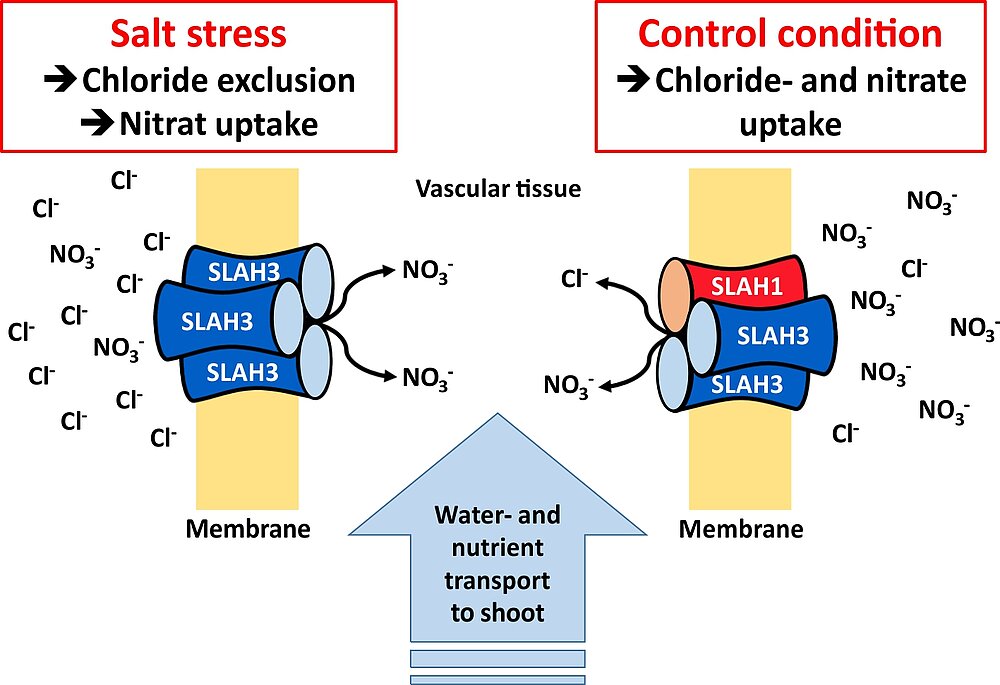Nutrition of plants
Nutrition of plants under salt stress condition
Higher plants take up nutrients via the roots and load them into xylem vessels for translocation to the shoot. Although anion transport systems have been identified, the molecular mechanism that lies behind the balance between NO3- and Cl- loading into the xylem remains largely unknown.
Under salt stress plants must prevent chloride uptake from the soil while maintaining nitrate nutrition. In xylem cells, responsible for loading the root vasculature with nutrients, we found two anion channels, SLAH1 and SLAH3, co-localized. In SLAH1 loss-of-function plants the xylem chloride content is strongly reduced. Our functional expression studies in Xenopus oocytes and SLAH1/SLAH3 transcript analyses show that via differential expression and heteromeric assembly of SLAH1/SLAH3 anion channel modules, plants are capable to adjust the ratio between chloride and nitrate in the shoot (Fig. 1). Thus, SLAH1 abundance controls chloride fluxes to the shoot without affecting the uptake of NO3-, predestining the SLAH1 gene as a promising candidate for engineering salinity-tolerant plants.
In addition to the above-mentioned anion channels, a third channel, SLAH2, is expressed in the root vasculature. We could characterize SLAH2 as a nitrate specific anion channel that could be responsible for the loading of xylem vessels with nitrate even under salt stress conditions.
Our current research is focused on this module of xylem loading anion channels. We combine super-resolution microscopy with sophisticated biophysical/electrophysiological approaches to elucidate the regulation of the SLAH anion channel based transport module under salt stress conditions.









